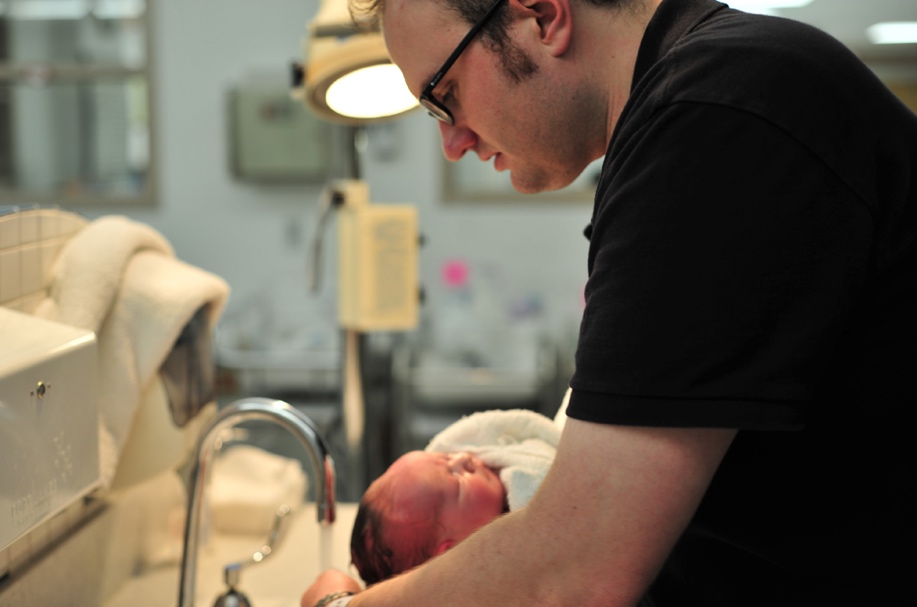Skill Practice: Speculating
As you read, you need to be constantly asking yourselves why an idea might be true or what might happen in the future. These questions help you to make speculations. You can think of speculating as making guesses, inferences, or predictions. At university, professors expect students to not only read and understand a text but to think about the greater implications of the information. By learning to speculate as you read, you’ll be more prepared for university. Here are some questions to ask yourself as you read:
|
Questions to Ask Yourself |
|
|
Speculating about the Past |
Speculating about the Future |
|
|
As you read, try to ask yourself these questions. They will help you think more deeply about the reading and become a more thoughtful student.
Pre-Reading
Pre-Reading Activity
Discuss the questions with a classmate.
- Agents of socialization are people or institutions that contribute to individuals’ socialization. What are some agents of socialization? Name at least five.
- What is the role of the government in socialization?
- How can media shape the way individuals are socialized?
Look at the diagram below. It summarizes the beginning of the “Reading 4.” Quickly preview the reading. Try to fill in the missing parts.

Reading 4: Agents of Socialization [1]
Agents of Socialization
Socialization helps people learn to function successfully in their social worlds. How does the process of socialization occur? How do we learn to use the objects of our society’s material culture? How do we come to adopt the beliefs, values, and norms that represent its nonmaterial culture? This learning takes place through interaction with various agents of socialization, like peer groups and families, plus both formal and informal social institutions.
Social Group Agents
Social groups often provide the first experiences of socialization. Families, and later peer groups, communicate expectations and reinforce norms. People first learn to use the tangible objects of material culture in these settings, as well as being introduced to the beliefs and values of society.
Family
Family is the first agent of socialization. Mothers and fathers, siblings and grandparents, plus members of an extended family, all teach a child what he or she needs to know. For example, they show the child how to use objects (such as clothes, computers, eating utensils, books, bikes); how to relate to others (some as “family,” others as “friends,” still others as “strangers” or “teachers” or “neighbors”); and how the world works (what is “real” and what is “imagined”). As you are aware, either from your own experience as a child or from your role in helping to raise one, socialization includes teaching and learning about an unending variety of objects and ideas.
Remember, however, that families do not socialize children in a vacuum. Many social factors affect the way a family raises its children. For example, we can use sociological imagination to recognize that individual behaviors are affected by the historical period in which they take place. Sixty years ago, it would not have been considered especially strict for a father to hit his son with a wooden spoon or a belt if he misbehaved, but today that same action might be considered child abuse.
Sociologists recognize that race, social class, religion, and other societal factors play an important role in socialization. For example, poor families usually emphasize obedience and conformity when raising their children, while wealthy families emphasize judgment and creativity (National Opinion Research Center 2008). This may occur because working-class parents have less education and more repetitive-task jobs for which it is helpful to be able to follow rules and conform. Wealthy parents tend to have better educations and often work in managerial positions or careers that require creative problem solving, so they teach their children behaviors that are beneficial in these positions. This means children are effectively socialized and raised to take the types of jobs their parents already have, thus reproducing the class system (Kohn 1977). Likewise, children are socialized to follow gender norms, perceptions of race, and class-related behaviors.
In Sweden, for instance, stay-at-home fathers are an accepted part of the social landscape. A government policy provides subsidized time off work—480 days for families with newborns—with the option of the paid leave being shared between mothers and fathers. As one stay-at-home dad says, being home to take care of his baby son “is a real fatherly thing to do. I think that’s very masculine” (Associated Press 2011). Close to 90 percent of Swedish fathers use their paternity leave (about 340,000 dads); on average they take seven weeks per birth (The Economist, 2014). How do U.S. policies—and our society’s expected gender roles—compare? How will Swedish children raised this way be socialized to parental gender norms? How might that be different from parental gender norms in the United States?

A peer group is made up of people who are similar in age and social status and who share interests. Peer group socialization begins in the earliest years, such as when kids on a playground teach younger children the norms about taking turns, the rules of a game, or how to shoot a basket. As children grow into teenagers, this process continues. Peer groups are important to adolescents in a new way, as they begin to develop an identity separate from their parents and exert independence. Additionally, peer groups provide their own opportunities for socialization since kids usually engage in different types of activities with their peers than they do with their families. Peer groups provide adolescents’ first major socialization experience outside the realm of their families. Interestingly, studies have shown that although friendships rank high in adolescents’ priorities, this is balanced by parental influence.
Institutional Agents
The social institutions of our culture also inform our socialization. Formal institutions—like schools, workplaces, and the government—teach people how to behave in and navigate these systems. Other institutions, like the media, contribute to socialization by bombarding us with messages about norms and expectations.
School
Most U.S. children spend about seven hours a day, 180 days a year, in school, which makes it hard to deny the importance school has on their socialization (U.S. Department of Education 2004). Students are not in school only to study math, reading, science, and other subjects—the primary function of this system. Schools also serve another function in society by socializing children into behaviors like practicing teamwork, following a schedule, and using textbooks.
School and classroom rituals, led by teachers serving as role models and leaders, regularly reinforce what society expects from children. Sociologists describe this aspect of schools as the hidden curriculum, the informal teaching done by schools.
For example, in the United States, schools have built a sense of competition into the way grades are awarded and the way teachers evaluate students (Bowles and Gintis 1976). When children participate in a relay race or a math contest, they learn there are winners and losers in society. When children are required to work together on a project, they practice teamwork with other people in cooperative situations. The hidden curriculum prepares children for the adult world. Children learn how to deal with bureaucracy, rules, expectations, waiting their turn, and sitting still for hours during the day. Schools in different cultures socialize children differently in order to prepare them to function well in those cultures. The latent functions of teamwork and dealing with bureaucracy are features of U.S. culture.
Schools also socialize children by teaching them about citizenship and national pride. In the United States, children are taught to say the Pledge of Allegiance to the American flag. Most districts require classes about U.S. history and geography. As academic understanding of history evolves, textbooks in the United States have been looked at carefully and revised to update attitudes toward other cultures as well as perspectives on historical events; thus, children are socialized to a different national or world history than earlier textbooks may have done. For example, information about the mistreatment of African Americans and Native American Indians more accurately reflects those events than in textbooks of the past.
|
Big Picture |
|
Controversial Textbooks On August 13, 2001, twenty South Korean men gathered in Seoul. Each chopped off one of his own fingers to protest eight textbooks approved by Tokyo for use in Japanese middle schools. According to the Korean government (and other East Asian nations), the textbooks did not discuss the negative events in Japan’s history against other Asian countries. In the early 1900s, Japan was one of Asia’s more aggressive nations. For instance, it held Korea as a colony between 1910 and 1945. Today, Koreans argue that the Japanese are ignoring that aspect of their colonial history through these textbooks. One major criticism is that they do not mention that, during World War II, the Japanese forced Korean women into sexual slavery. Additionally, some Japanese textbooks describe an important Korean independence demonstration in 1919 as a “riot.” In reality, Japanese soldiers attacked peaceful demonstrators, leaving about 6,000 dead and 15,000 wounded (Crampton 2002). Although it may seem extreme that people are so angry about how events are described in a textbook that they would chop off their own fingers, the protest affirms that textbooks are a significant tool of socialization in state-run education systems. |
The Workplace
Just as children spend much of their day at school, many U.S. adults at some point invest a significant amount of time at a place of employment. Although socialized into their culture since birth, workers require new socialization into a workplace, in terms of both material culture (such as how to operate the copy machine) and nonmaterial culture (such as whether it’s okay to speak directly to the boss or how to share the refrigerator).
Different jobs require different types of socialization. In the past, many people worked a single job until retirement. Today, the trend is to switch jobs at least once a decade. This means that people must become socialized to, and socialized by, a variety of work environments.
Religion
While some religions are informal institutions, here we focus on practices followed by formal institutions. Religion is an important avenue of socialization for many people. The United States is full of Jewish synagogues, Hindu and Buddhist temples, Christian churches, Muslim mosques, and similar religious communities where people gather to worship and learn. Like other institutions, these places teach participants how to interact with the religion’s material culture (like a Jewish mezuzah, a Muslim prayer rug, or a Catholic communion wafer). For some people, important ceremonies related to family structure—like marriage and birth—are connected to religious celebrations. Many religious institutions also uphold gender norms and contribute to their enforcement through socialization. From ceremonial rites of passage that reinforce the family unit to power dynamics that reinforce gender roles, organized religion fosters a shared set of socialized values that are passed on through society.
Government
Although we do not think about it, many of the rites of passage people go through today are based on age norms established by the government. To be defined as an “adult” usually means being eighteen years old, the age at which a person becomes legally responsible for him- or herself. And sixty-five years old is the start of “old age” since most people become eligible for senior benefits at that point.
Each time we embark on one of these new categories—senior, adult, taxpayer—we must be socialized into our new role. Seniors must learn about Medicare, Social Security benefits, and senior shopping discounts. When U.S. males turn eighteen, they must register with the U.S. military’s Selective Service System within thirty days to be entered into a database for possible military service. These government laws mark the points at which we require socialization into a new category.
Mass Media
Mass media distribute impersonal information to a wide audience, via television, newspapers, radio, and the Internet. With the average person spending over four hours a day in front of the television (and children averaging even more screen time), media greatly influences social norms (Roberts, Foehr, and Rideout 2005). People learn about objects of material culture (like new technology and transportation options), as well as nonmaterial culture—what is true (beliefs), what is important (values), and what is expected (norms).
|
Sociology in The Real World |
|
Girls and Movies Pixar is one of the largest producers of children’s movies in the world and has released large commercially successful movies, such as Toy Story, Cars, The Incredibles, and Up. What Pixar has never before produced is a movie with a female lead role. This changed with Pixar’s newest movie Brave, which was released in 2012. Before Brave, women in Pixar served as supporting characters and love interests. In Up, for example, the only human female character dies within the first ten minutes of the film. For the millions of girls watching Pixar films, there are few strong characters or roles for them to identify with. If they do not see possible versions of themselves, they may come to view women as secondary to the lives of men. 
The animated films of Pixar’s parent company, Disney, have many female lead roles. Disney is well known for films with female leads, such as Snow White, Cinderella, The Little Mermaid, and Mulan. Many of Disney’s movies star a female, and she is nearly always a princess figure. If she is not a princess to begin with, she typically ends the movie by marrying a prince or, in the case of Mulan, a military general. Although not all “princesses” in Disney movies play a passive role in their lives, they typically find themselves needing to be rescued by a man and getting married. In addition to this large number of princesses, many parents are expressing concern about the culture of princesses that Disney has created. Peggy Orenstein addresses this problem in her popular book, Cinderella Ate My Daughter. Orenstein wonders why every little girl is expected to be a “princess” and why pink has become an all-consuming obsession for many young girls. Another mother wondered what she did wrong when her three-year-old daughter refused to do “nonprincessy” things, including running and jumping. The effects of this princess culture can have negative consequences for girls throughout life. An early emphasis on beauty and sexiness can lead to eating disorders, low self-esteem, and risky sexual behavior among older girls. What should we expect from Pixar’s new movie, the first starring a female character? Although Brave features a female lead, she is still a princess. Will this film offer any new type of role model for young girls? (O’Connor 2011; Barnes 2010; Rose 2011). |
Reading Comprehension
Choose the best answers to the following questions according to the reading.
- Which of the following is typically the earliest agent of socialization?
- school
- family
- mass media
- workplace
- How do schools prepare children to one day enter the workforce?
- with a standardized curriculum
- through the hidden curriculum
- by socializing them in teamwork
- all of the above
Answer the questions in your own words.
- In order to support diversity and equality, why might it be important for governments and schools to counteract the socialization provided by families?
- How did the government influence fathers behavior in Sweden? How might that have changed societal norms?
- What is a peer group, and how do they affect socialization?
- What is the hidden curriculum at schools?
- How was Brave different from other Pixar movies? Why was that significant?
Fill out the chart below. Some of the ideas are provided in the reading, but you will also need to speculate. Provide at least one example in each box. The first row has been done for you.
|
Material Culture |
Nonmaterial Culture |
|
|
ex. How do workplaces provide socialization into… |
They teach people how to use technology and machines at work. |
They show employees how to interact with their supervisors and coworkers. |
|
8. How do religions provide socialization into… |
|
|
|
9. How do governments provide socialization into… |
|
|
|
10. How do mass media provide socialization into… |
|
Vocabulary Practice
Complete the sentences below using the words in the box. You may need to change the form of the verbs to match the grammar of the sentences.
|
analytical conduct distinctive factors impact majority pursue resources technique transmit |
- The researchers _________________________ a series of experiments on the drug’s effects.
- There are many _________________________ that affect a person’s socialization, including family, media, and peers.
- Natural _________________________ include water, oil, minerals, and trees.
- After earning her Master’s degree, the woman is now _________________________ her doctorate.
- The doctors demonstrated their _________________________ and problem-solving skills by quickly identifying the injury and working to stabilize the patient.
- The singer was known for her _________________________ voice which others could not duplicate.
- Although people originally thought the disease was contracted through saliva, it is _________________________ through blood.
- The exact _________________________ of the crisis is unknown; authorities are still assessing the damage.
- The _________________________ of voters are willing to increase library funding, so the city will be able to open a new library next year.
- The chef had developed his own personal _________________________ for making the perfect pie crust.
Reading Discussion
Discuss these questions with your classmates.
- Who or what do you think had the most impact on your socialization?
- How have your experiences at school influenced your socialization?
- Since schools play an important role in children’s socialization, should governments allow private schools?
- How does television and mass media shape the way people to view different genders, ethnicities, etc.? How can this be counteracted?
- How does this picture show both material and nonmaterial culture?

- Download the original, un-adapted version for free at https://cnx.org/contents/AgQDEnLI@13.13:MlbkT6dl@8/5-3-Agents-of-Socialization ↵
